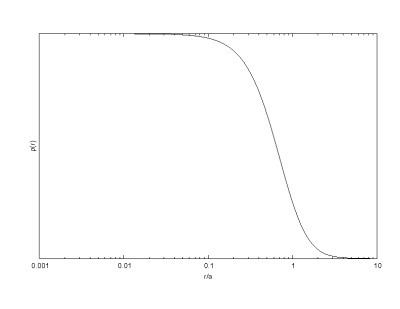 | ||
The Plummer model or Plummer sphere is a density law that was first used by H. C. Plummer to fit observations of globular clusters. It is now often used as toy model in N-body simulations of stellar systems.
Contents
Description of the model
The Plummer 3-dimensional density profile is given by
where M is the total mass of the cluster, and a is the Plummer radius, a scale parameter which sets the size of the cluster core. The corresponding potential is
where G is Newton's gravitational constant.
Properties
The mass enclosed within radius
Many other properties of the Plummer model are described in Herwig Dejonghe's comprehensive paper.
Core radius
Half-mass radius is
Virial radius is
Applications
The Plummer model comes closest to representing the observed density profiles of star clusters, although the rapid falloff of the density at large radii (
The behavior of the density near the center does not match observations of elliptical galaxies, which typically exhibit a diverging central density.
The ease with which the Plummer sphere can be realized as a Monte-Carlo model has made it a favorite choice of N-body experimenters, in spite of the model's lack of realism.
